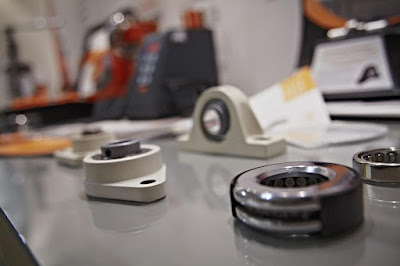Maximizing Efficiency in Bearings: Calculating Energy and Heat
Bearings are an essential component of most machines that require rotational motion. They support the weight and axial loads applied on the rotating components and reduce friction and wear. However, bearings can generate a significant amount of heat due to the sliding or rolling friction between the contacting surfaces. This heat generation can adversely affect the performance and lifespan of the machine if not addressed properly. The study of bearings energy and heat calculation is, therefore, critical to design and operate reliable and efficient machines.
In this blog post, we will delve into the principles and techniques involved in calculating the energy and heat generated by bearings. We will discuss the factors that influence the heat generation, such as the speed, load, lubrication, and bearing type. We will also explore the various methods used for measuring and predicting the heat generated by bearings, such as the heat transfer coefficient, thermal resistance, and finite element analysis.
Furthermore, we will examine the impact of bearings' energy and heat on machine efficiency and reliability. We will highlight the
1. Understanding the importance of energy and heat calculation in bearings
Bearings are crucial components in all kinds of machinery, and they play a key role in ensuring that equipment operates efficiently and effectively. However, one significant issue that can affect the performance of bearings is the buildup of excess heat and energy. This can lead to premature wear and tear, reduced bearing lifespan, and even catastrophic failure in some instances. Therefore, understanding how to calculate energy and heat in bearings is critical for ensuring their long-term reliability and performance. In this document, we will explore the key concepts related to energy and heat calculation in bearings, including factors that influence heat generation, methods for measuring bearing temperature, and best practices for managing energy and heat buildup in various applications. By developing a deeper understanding of these concepts, you can optimize your equipment performance and minimize the risk of downtime and repair costs associated with bearing failure.
2. Factors to consider when calculating energy and heat in bearings
When it comes to calculating energy and heat in bearings, there are several factors that must be taken into consideration. First and foremost, the type of bearing being used must be evaluated, as different types of bearings will require different levels of energy and generate different amounts of heat. Other factors to consider include the load being placed on the bearing, the speed at which it is rotating, and the amount of lubrication that is present. The internal clearance of the bearing, which refers to the space between the bearing and its races, must also be taken into account. By carefully analyzing and factoring in all of these variables, it is possible to accurately calculate the energy and heat in bearings, which is essential for ensuring their proper operation and longevity.
3. The role of lubrication in managing energy and heat in bearings
The role of lubrication in managing energy and heat in bearings is critical to ensuring their longevity and optimal performance. Proper lubrication facilitates the transfer of energy and heat within the bearing components, reducing friction and wear. The correct type, amount, and distribution of lubricant in a bearing system can significantly impact its efficiency and durability. Lubrication also plays a crucial role in protecting against contamination and corrosion, both of which can further hinder the bearing's performance. To determine the optimal lubrication strategy for a particular application, various factors need to be considered, such as bearing size, load, speed, and temperature. Effective lubrication management can be achieved through regular monitoring, maintenance, and the use of advanced lubrication techniques, such as high-performance oils and greases. A comprehensive understanding of lubrication is essential for accurate energy and heat calculations when designing, selecting, or troubleshooting bearing systems.
4. Methods used to calculate energy and heat in bearings
When it comes to the performance and durability of bearings, it is essential to consider the energy and heat generated within the bearing during its operation. Understanding these factors ensures that the bearing is operating efficiently and can prevent damage that may result from excessive energy or heat. Various methods can be employed to calculate energy and heat in bearings, including analytical solutions, numerical simulations, and experimental measurements. Analytical solutions involve using mathematical equations to calculate the energy and heat generated within the bearing. Numerical simulations, on the other hand, rely on computer modeling to simulate the bearing's operation, taking into account various parameters such as speed, load, and lubrication. Experimental measurements entail physically measuring the energy and heat generated within the bearing using specialized equipment. By using these methods, engineers and designers can optimize the bearing design and operating conditions to achieve maximum efficiency and longevity.
5. Best practices for maintaining optimal energy and heat levels in bearings
Bearings are a critical component in a wide range of industrial applications, and their proper functioning is essential for the smooth operation of machinery. To ensure optimal performance, it is important to maintain optimal energy and heat levels in bearings. Here are five best practices that can help you achieve this
In conclusion, knowing how to calculate bearings energy and heat is crucial for engineers and technicians involved in machinery and equipment maintenance. The calculations help ensure that the bearings operate efficiently and correctly, reducing the risk of equipment failure or downtime. While the process may seem complicated, with proper training and experience, professionals can master the skill and keep their machinery functioning at peak performance.



Comments
Post a Comment